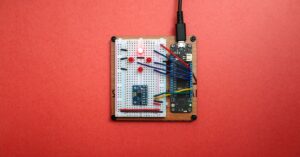Technological Innovations in Athlete Performance Measurement

Technological Innovations in Athlete Performance Measurement
Introduction
In the realm of sports, the pursuit of peak performance has driven the integration of cutting-edge technology into athlete training and performance measurement. From advanced wearable devices to sophisticated data analytics, technological innovations are revolutionizing how athletes track, analyze, and enhance their performance.
Wearable Technology
One of the most significant advancements in athlete performance measurement is the development of wearable technology. These devices are equipped with sensors that capture a myriad of data points in real-time, providing athletes and coaches with invaluable insights into various aspects of performance.
- GPS Trackers: Used in sports like soccer, rugby, and American football to monitor player movement, speed, and distance covered during training and games.
- Biometric Sensors: Measure physiological parameters such as heart rate variability, oxygen saturation, and lactate levels, aiding in understanding the athlete’s physiological responses to training.
- Smart Clothing: Integrates sensors directly into clothing fabric to track metrics like muscle activity, posture, and even hydration levels.
Data Analytics and AI
Accumulating data from wearable devices is only half the battle. The real value lies in the analysis of this data to derive actionable insights. Advances in data analytics and artificial intelligence (AI) have enabled:
- Performance Pattern Recognition: AI algorithms analyze data to identify patterns in an athlete’s performance, helping coaches tailor training programs for optimal results.
- Real-time Feedback: Coaches receive immediate feedback during training sessions or games, allowing for on-the-spot adjustments to strategy or technique.
- Predictive Modeling: AI can predict injury risks based on biomechanical data, allowing for proactive injury prevention strategies.
Virtual Reality (VR) and Augmented Reality (AR)
Virtual and augmented reality technologies are transforming how athletes prepare for competition and enhance their skills:
- VR Training Simulations: Athletes can practice in virtual environments that replicate real game scenarios, improving decision-making and reaction times.
- AR Overlays: Provide real-time performance metrics overlaid onto an athlete’s field of view during training, aiding in technique refinement.
Case Studies
Several professional sports organizations have embraced these technologies with remarkable results:
Major League Baseball (MLB) teams use biomechanical sensors to analyze pitcher mechanics, reducing injury rates and improving performance metrics.
In soccer, teams like FC Barcelona utilize GPS trackers to monitor player workload and optimize training schedules, leading to reduced fatigue-related injuries and improved match performance.
Future Trends
The future of athlete performance measurement is poised for further innovation:
- Miniaturization: Wearable devices will continue to become smaller, more discreet, and capable of capturing increasingly complex data.
- Integration of Biofeedback: Direct integration of physiological data into training equipment or apparel for seamless real-time adjustments.
- Personalized Training: AI-driven algorithms will tailor training programs to individual athletes’ unique physiological and performance characteristics.
Conclusion
Technological innovations in athlete performance measurement are not just enhancing training methods but also redefining the limits of human athletic potential. As these technologies continue to evolve, athletes and coaches alike stand to benefit from unprecedented insights and capabilities, ushering in a new era of sports performance.





